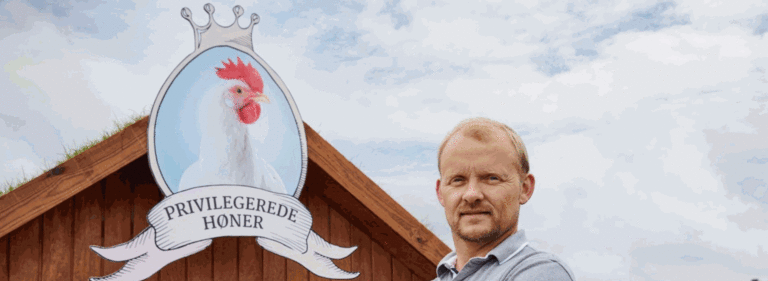Home milling is an option many producers can consider, thanks to increasingly available equipment and expertise from Denmark coming to the UK.
Klaus and Betina Joergensen have been egg producers for 21 years and own the Boldinggaard poultry farm in Glejbjerg in the south-west region of Denmark, which they built in 1995.
The business has grown from a 10,000 strong free-range flock in 1995, which had grown to 25,000 in 2002, and today numbers 48,000 birds.
Besides free-range birds, he also has 140 hectares of land and grows wheat, partly for feed. In May 2016, Joergensen embarked on producing his own feed for the chickens, and today he produces 60-65% of his own feed requirements. He invested in a grinding and mixing plant from Skiold with a SK5000 disc mill, screen cleaner and a FlexMix which mixes two different kinds of feed.
The feed consists of 65% wheat, 7% shells and 28% supplements and approximately 2,500 tons of feed are used each year. At the moment, 100 kg wholesale bagged feed costs approximately 182 DKR and it costs approximately 160 DKR to produce 100 kg feed, a substantial saving. This means the return on investment is approximately three years.
On the neighbouring farm the day-old chicks are reared to 16 weeks. Up to eight weeks, the birds are fed specialist feed and from eight weeks old they are fed feed for adult birds. At 16 weeks they are moved to Boldinggaard. Mortality up to 16 weeks is low at 0.7% and according to Joergensen virtually no veterinary medicine is used, although if it is required, he does so via their drinking water.
At 20 weeks, the hens start laying, and at 22 weeks the eggs are suitable to be sorted. Approximately 15.5 million eggs per year are laid at Boldinggaard. Laying is triggered at 2am when the lights are turned on, and by 6am 95% of the eggs are laid.
Joergensen is one of the largest producers of free-range eggs in Denmark and he sells to Danaeg A/S. Danaeg, a cooperative owned by the farms who produce the eggs. The suppliers produce organic, free-range, barn eggs and cage eggs.
“It’s all about management. When the chickens are thriving, my bank account is thriving,” says Joergensen.
Equipment for home milling
In the UK, Skiold equipment is distributed by DraperLAYERS. With its roots deeply seated in the Danish agricultural tradition, and with 21st century technology, Skiold offering solutions ranging from single machines to entire turnkey farm projects within feed milling, pig farms, seed processing and grain handling.
In 2018, Skiold acquired Landmeco, bringing its experience into feed milling and farm equipment for poultry farms. Landmeco is also a Danish-based firm known for poultry farm equipment.
The mill systems available range from one to five tonnes per hour and up to 40 tonnes per hour with or without pelleting we can cover all requirements.
When building a feed mill it can be done vertically or horizontally. Vertical designed house the processing equipment in towers, and horizontal systems place as much equipment as possible on the floor. Horizontal is the preferred layout for most farmers, because it is more accessible, easier to move around in the factory with trucks and materials and can increases productivity as its faster working on one floor than several floors. It can also be a cheaper option because tall buildings are generally more expensive.


